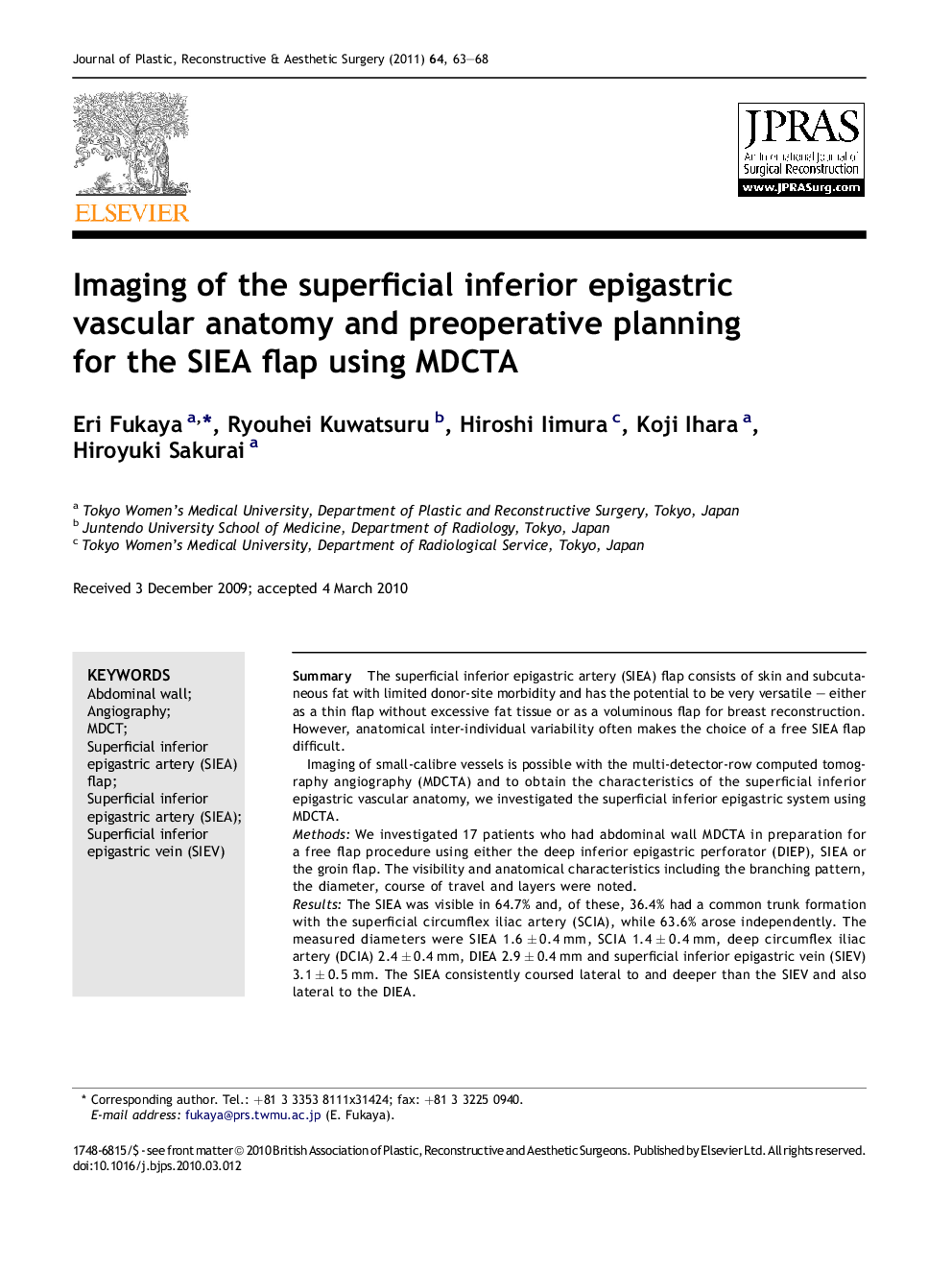| Article ID | Journal | Published Year | Pages | File Type |
|---|---|---|---|---|
| 4119222 | Journal of Plastic, Reconstructive & Aesthetic Surgery | 2011 | 6 Pages |
SummaryThe superficial inferior epigastric artery (SIEA) flap consists of skin and subcutaneous fat with limited donor-site morbidity and has the potential to be very versatile – either as a thin flap without excessive fat tissue or as a voluminous flap for breast reconstruction. However, anatomical inter-individual variability often makes the choice of a free SIEA flap difficult.Imaging of small-calibre vessels is possible with the multi-detector-row computed tomography angiography (MDCTA) and to obtain the characteristics of the superficial inferior epigastric vascular anatomy, we investigated the superficial inferior epigastric system using MDCTA.MethodsWe investigated 17 patients who had abdominal wall MDCTA in preparation for a free flap procedure using either the deep inferior epigastric perforator (DIEP), SIEA or the groin flap. The visibility and anatomical characteristics including the branching pattern, the diameter, course of travel and layers were noted.ResultsThe SIEA was visible in 64.7% and, of these, 36.4% had a common trunk formation with the superficial circumflex iliac artery (SCIA), while 63.6% arose independently. The measured diameters were SIEA 1.6 ± 0.4 mm, SCIA 1.4 ± 0.4 mm, deep circumflex iliac artery (DCIA) 2.4 ± 0.4 mm, DIEA 2.9 ± 0.4 mm and superficial inferior epigastric vein (SIEV) 3.1 ± 0.5 mm. The SIEA consistently coursed lateral to and deeper than the SIEV and also lateral to the DIEA.ConclusionMDCTA provided detailed three-dimensional information of the superficial inferior epigastric vascular system including the course and size of the SIEA. The information on vascular anatomy obtained with the MDCTA is valuable in the preoperative planning of the free SIEA flap and should be performed routinely.
